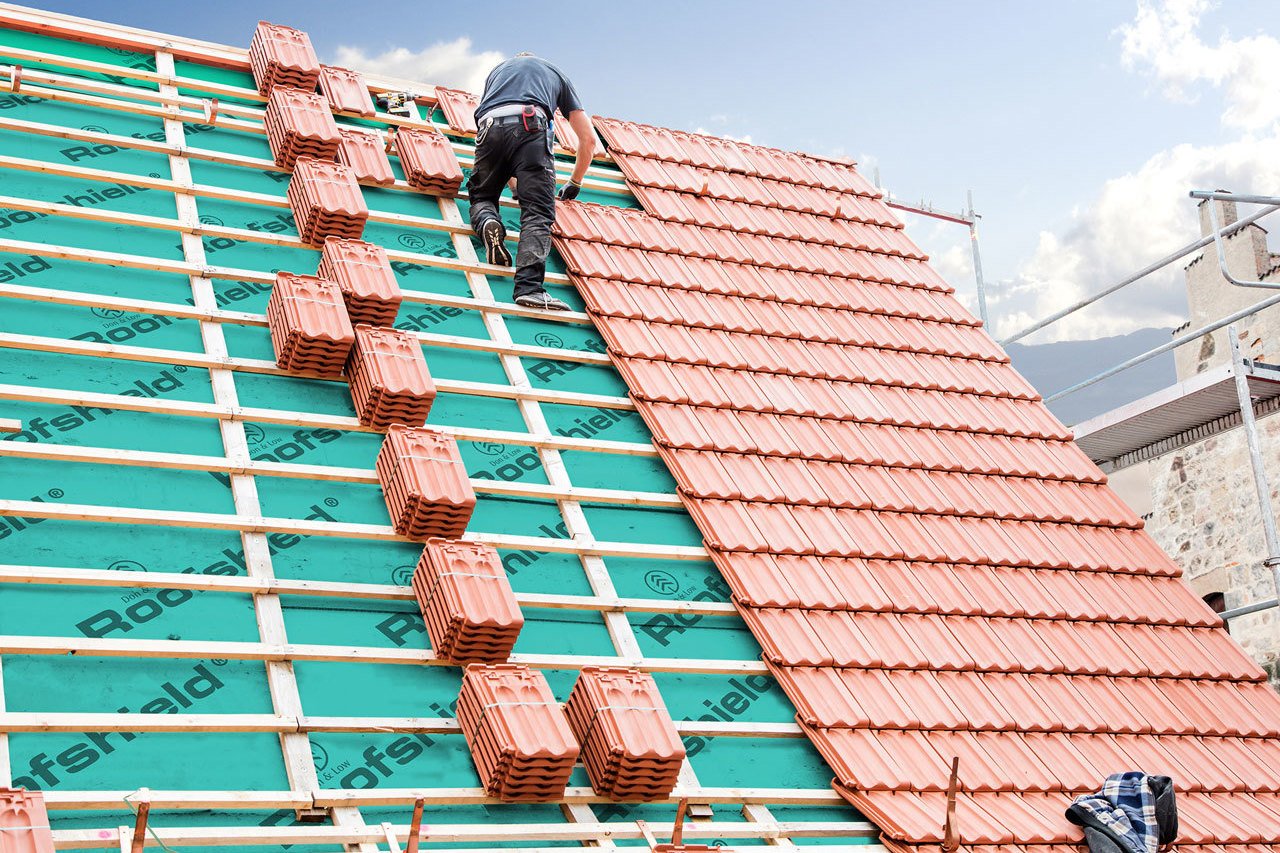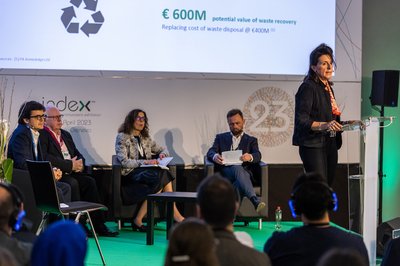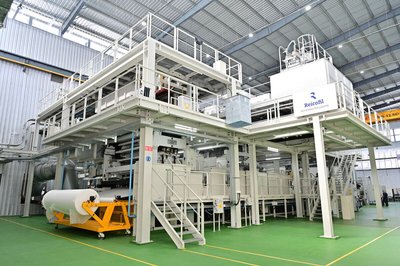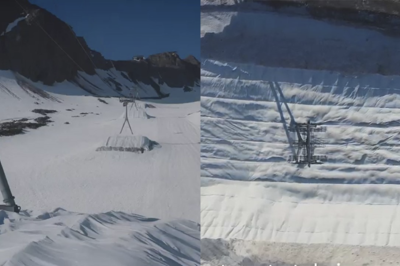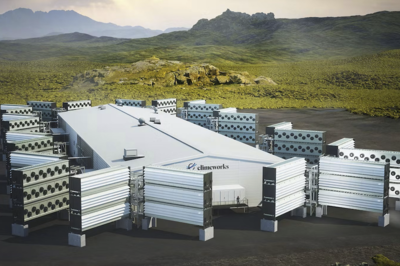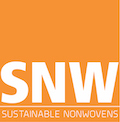
Invisible inner tubes for infrastructure
Nonwovens provide a host of largely invisible functions in a wide range of building and construction applications and one of the most well-hidden and little known is surely that of Cured-In-Place-Pipe (CIPP) linings.
CIPP is now a mature and well-proven technology as a cost-effective method for repairing damaged and failing underground pipework, in order to avoid having to replace it.
The CIPP process repairs leaking, cracked and broken pipes through an advanced internal insertion method that completely eliminates the need to dig or drill underground.
The liners are resin-impregnated needle punched or sometimes stitch bonded tubular nonwovens with impenetrable polyurethane exterior coatings.
The installation involves shooting the flexible liner into a host pipe so the resin-soaked nonwoven adheres to it, resulting in a ‘pipe within a pipe’ that is manufactured to perfectly conform to the existing diameter.
A UV or heat-curing process is then employed to seal the nonwoven to the compromised pipe lining, to create a durable, leak-proof inner tube.
Because of the simple installation method, CIPP solutions provide complete repair, no matter the project complexities or challenges, and keep the pipe fully operational for an average of 50 extra years.
In a recent project in Hamburg, Germany, the rehabilitation of a sewage pipe stretching over 1.1 km along the river Elbe was successfully carried out using just eight sections of these tubular nonwovens.
Roofing laminates
Above ground, nonwovens in buildings are generally concealed behind walls and laid under floors and within roofing spaces to provide breathable acoustic and thermal insulation, as well as cleaning the air from within ventilation systems.
As an expert in the technology for their production, Italy’s A.Celli observes that nonwoven laminates are particularly effective for roofing and construction applications because they retain moisture and act as an insulating layer while enabling the heating and cooling costs of a building to be kept down.
Taken individually, a single ply nonwoven is generally not strong enough and does not possess the necessary performance properties for many building applications.
The low-cost and high-speed lamination of multiple layers of nonwovens can be enabled through the use of hot melt adhesives applied in a single coat to provide a solid barrier, or in a spray pattern which ensures good bonding while maintaining permeability and breathability. For roofing and construction laminates, however, calendering is the preferred method, creating very lightweight composites at high speeds.
For flat roofs, nonwovens provide a protective waterproof layer that weighs a mere 4% of the average waterproof alternative and can last up to 40 years or more. When it comes to pitched roofs, nonwovens are lighter than commonplace asphalted cardboard and are more effective, while at the same time being more environmentally friendly.
SMS benchmark
Don & Low’s Roofshield® remains the benchmark when it comes to roofing underlays and is based on a patented spunbond-meltblown-spunbond (SMS) structure.
Given the high moisture level of mortar and plaster, condensation is a potential problem in any new house, the company reports. Inhabiting and heating a house causes materials to dry out and release water vapour. This is a lengthy process that moves at a snail’s pace. In addition, water vapour is further released into the home’s living area as a byproduct of everyday activities including showering, cooking, washing and drying clothes, or even boiling kettles.
The real problem is that modern building envelopes are getting more airtight as building regulations push for greater thermal efficiency in the commercial and residential sectors. This is good news for the environment and energy expenses, but not for condensation.
When heated air is trapped within a tightly sealed building without a way to escape – like a window or an air vent – it flows to a cooler surface such as the ceiling and condenses there.
The structure of Don & Low’s Roofshield® allows high levels of airflow in addition to the transport of moisture vapour, rendering the formation of condensation extremely unlikely. This stands in sharp contrast with the vast majority of air and vapour permeable underlays, which rely on an airtight film layer to accomplish their intended functionality.
Created and manufactured at Don & Low’s plant in Forfar, Scotland, Roofshield® has found widespread adoption and is used in some of the most severe environments on the planet, including the Antarctic.
Specifiers can choose from any outer roof covering configuration that serves their demands, since Roofshield®’s resistance to wind loads enables its use in all exposure conditions without constraints on batten spacing.
Geotextiles
It’s not only in buildings, however, that nonwovens are invisible – as geotextiles are simply everywhere.
In infrastructure projects around the world, permeable geotextiles – typically made from polypropylene or polyester – have a range of functions to perform in respect of separation, filtration, reinforcement, protection or drainage.
Construction teams have employed them for decades where stone is used as the base for roads and railway lines. When stone is placed against indigenous soil there is always a danger of it becoming contaminated or unstable as a result of both the relentless weight placed upon it over years of traffic and of water movement through the soil.
A geotextile layer beneath the base of the stone allows the water to drain away but at the same time prevents instability and contamination.
Geotextiles are also used extensively beneath coastal defences, where a robust layer laid below rock armour or pre-cast concrete units ensures that the underlying soils are not leached out by tidal action, undermining the whole structure.
Nonwoven geotextiles are to be found, for example, holding together the world’s largest artificial structure – Palm Island Jumeirah in Dubai, built from around 90 million cubic metres of sand and rock. The engineered fabrics separate the rock base from the sand ‘beach’ and are also laid under the roads on each of the fronds.
They also underpin the biggest-ever reclamation project – Chek Lap Kok Island, which was extended from an area of three square miles to twelve and required the reclamation of some 367 million cubic metres of stone, sand and gravel to accommodate Hong Kong International Airport. In total, more than seven million square metres of nonwoven geotextiles were used in the project.
Some of the biggest names in the nonwovens industry are heavily involved in the supply of invisible but indispensable performance products for building and construction, as will be demonstrated at INDEX™26 in Geneva.

